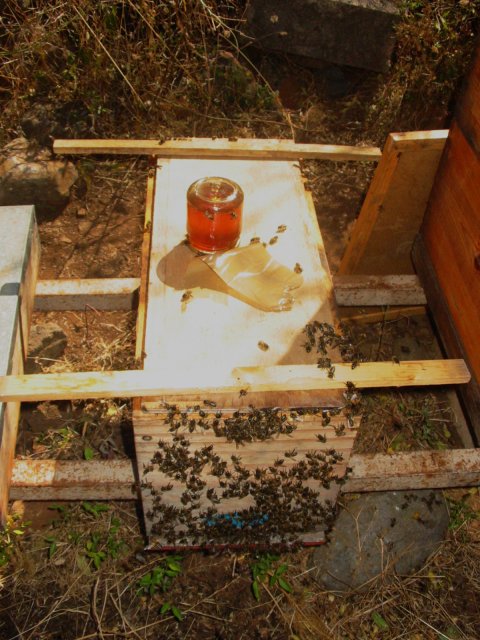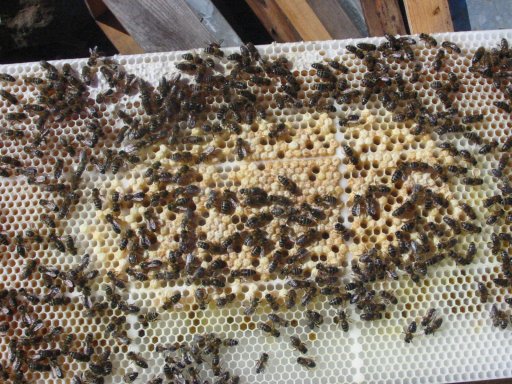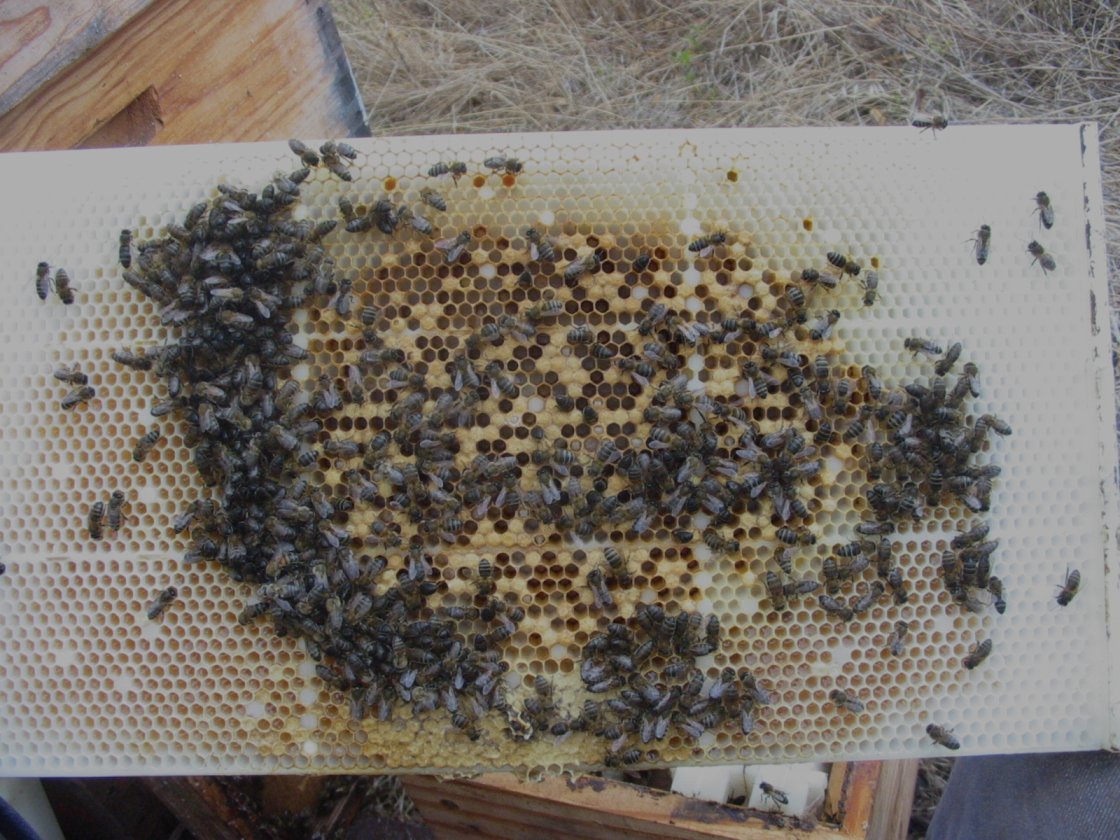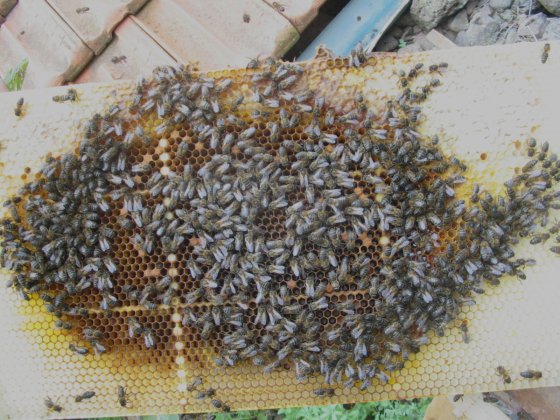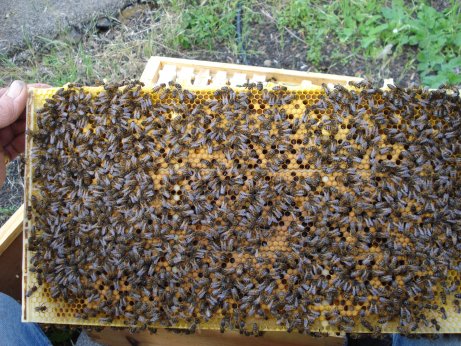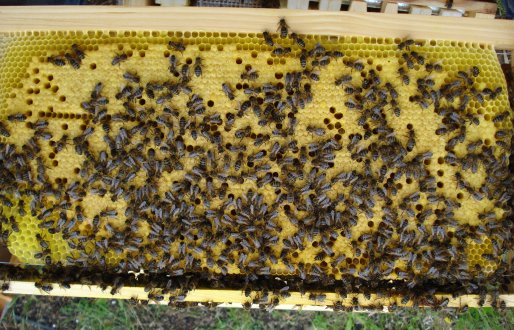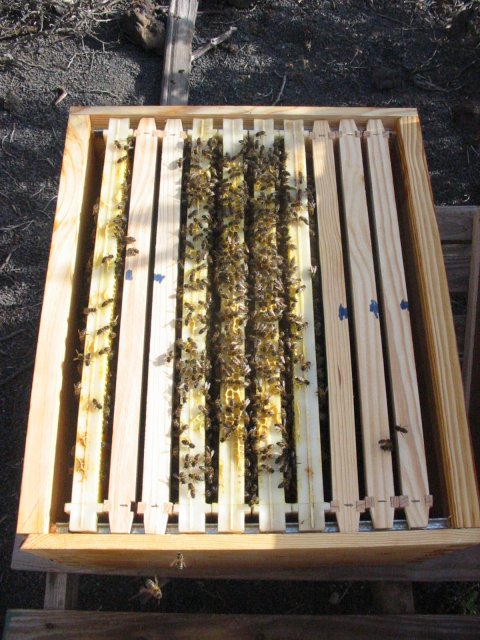How do we get our bees small?
|
It wasn’t that easy for Dee, nor has it been for us as mentioned. Nowadays it is much easier to solve.
If large cell bees are given 4.9 mm foundations they won’t be able to build on them. The outcome would be something like this:
The principle is that a bee hatching from a small cell is very likely to be capable of building the same cell size.
Therefore we went a step by step. At first from 5.4 mm to 5.1mm, with almost no complications, and then from 4.9 mm to 5.1 mm, that was a complete mess in the beginning. Just one of a hundred made it on the first attempt.
One must also observe the following.
In Nature the bees usually build in various dimensions. Large for honey and small in the breeding nest. This is a legitimately criticized part of our work, as we are forcing the bees to accept only one measurement. But it is necessary at first to get the disease under control. Under a cell size of 4.9 mm we have no more issues. 100 years on large cells is too long and the bees have to re-learn how to build small and to defend themselves against the disease by themselves. In order to achieve it we need to reduce the cell size to 4.9 mm and later they can build freely, but I have mentioned this earlier.
Another problem is that the bees have difficulties to build small cells during strong honey flow.
In the beginning I had about 100 colonies building very well on 4.9mm cells. As the spring came all of a sudden all of them were unable to build this measure. I was, of course, in an uproar! I had little experience and contacted Dee in Arizona immediately. She only asked: “What flower is in bloom?”
“Almond blossom” , I replied. She said “ wait for a week and then have look”. And she was right, after the almond bloomed it was all back to normal. Phfffffffff…
It is good to make sure the period of comb construction is not overlapping excessive blossoming seasons.
Furthermore the bees build the small cells better in the foundations situated close to the brood nest.
When the bees are growing well, we place foundations directly next to the brood where they are drawn and egged in within a day.
If I was to give anyone willing to start with small cells 5 fully drawn 4.9 mm combs, it will be enough to shake down his bees and the queen on these and he’d already have achieved everything. The Queen has a flexible abdomen and can lay its eggs in the small cells.
After 6 weeks only bees born in small cells remain. Then mostly the bees themselves change the queen that will already be born smaller. It’s that simple.
But we have no fully drawn combs.
A colleague from the US had the Idea to build combs of plastic. Ughhh… plastic!
Plastic is something we do not want in the hive. But it can save years of struggle and do it in a few months. The plastic combs are then taken out again and can soon be used for the next conversion. If I’d have had those 10 years ago it’d sure have saved me two years of hard work, the loss of strong colonies and money due to the failure of many hives.
We then took these plastic combs; they’re called HSC and are fabricated by the owner in China, and introduced them to our colleagues here. Another adventure I can tell you. I myself made a test with three colonies and have recorded the results.
Manual
| 21.7.07 we have to prepare the HSC. First we need to rub the plastic combs with wax so as the bees accept them better | 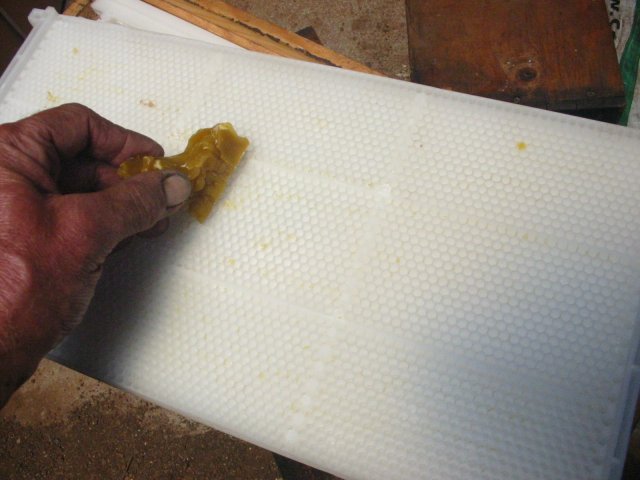 |
| then spray them with some honey and lemon grass oil.Lemon grass oil is the same substance as what is often sold as an expensive swarm bate. It smells like what the bees spray when they lift the butt to indicate where the others need to go. |
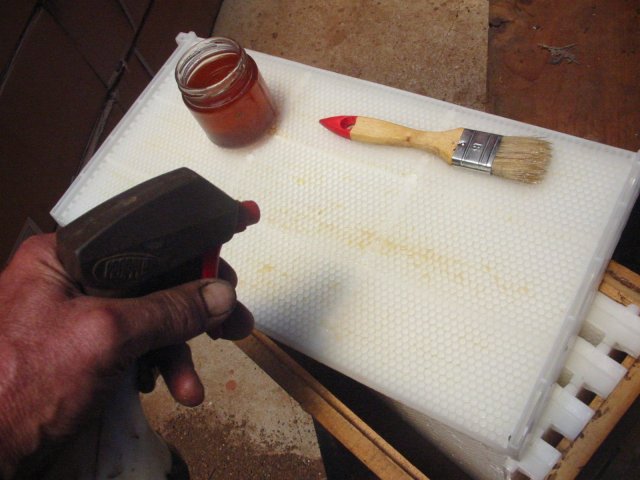 |
| A queen excluder to retain the queen has to be attached to the exit/entrance of the hive, so as the queen cannot get out. It must remain there up until the first brood hatches from the HSC! | 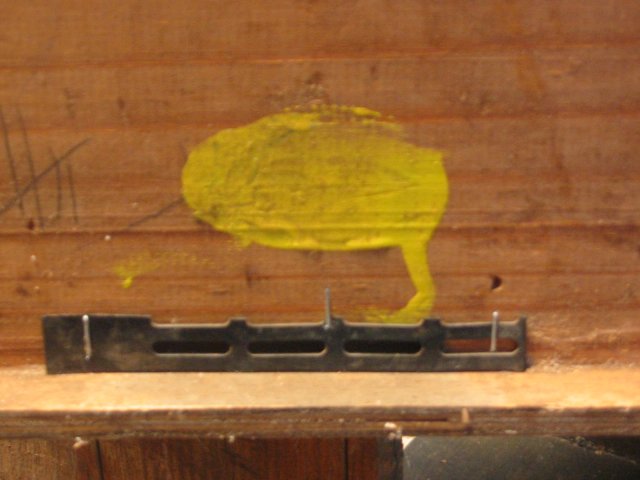 |
| Now we hang five HSC combs into a nuc and lock a queen with 5 bees in a small cage of which the bees will be able to free her by eating away the candy. We hang the cage between the combs and shake the necessary amount of bees in it.. | 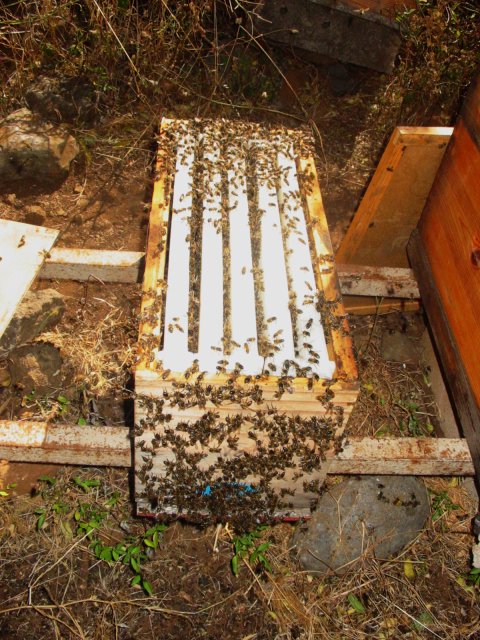 |
| We feed them with honey until they become strong | |
| 27.07.07 yet we can see eggs positioned in the HSC, sometimes it takes a bit longer. | 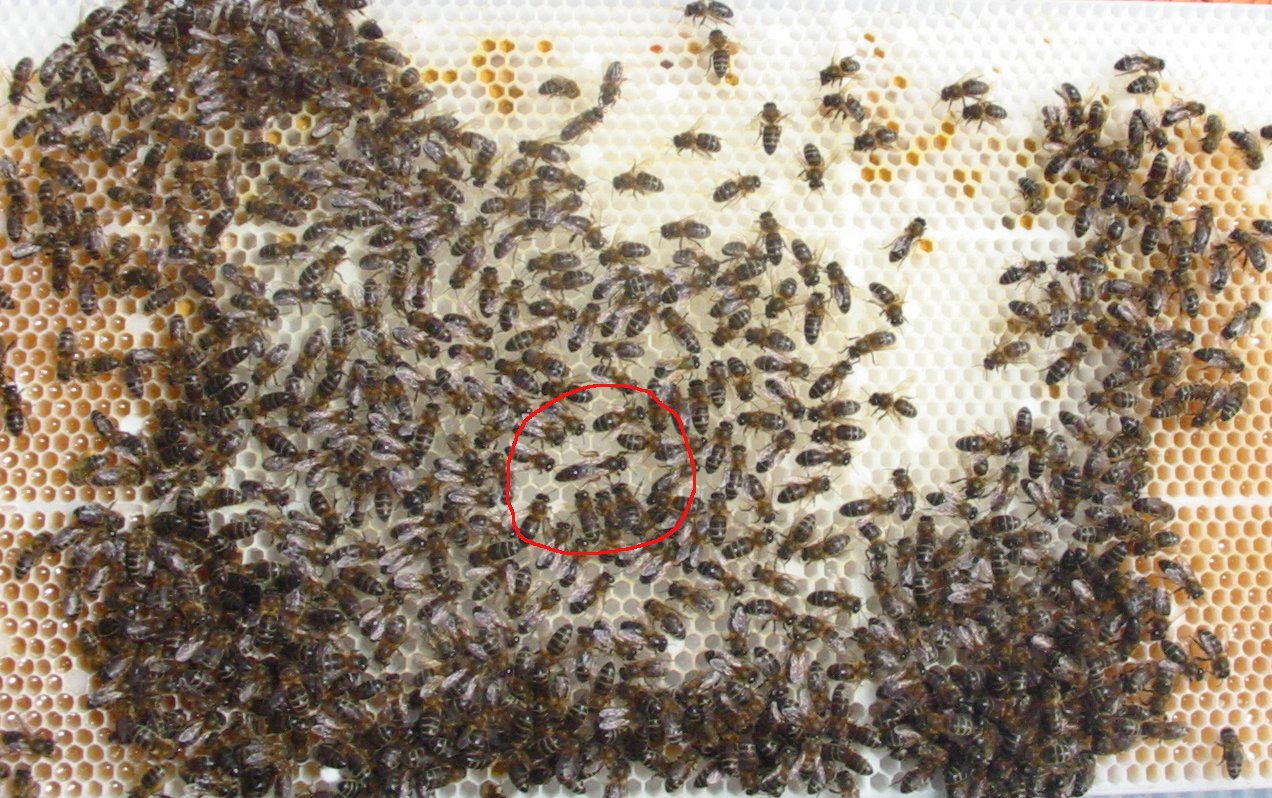 |
| Here we see the other nuc, which we have given one of the small cell queens. We can see that it is much smaller. The bees are still large cell bees. | 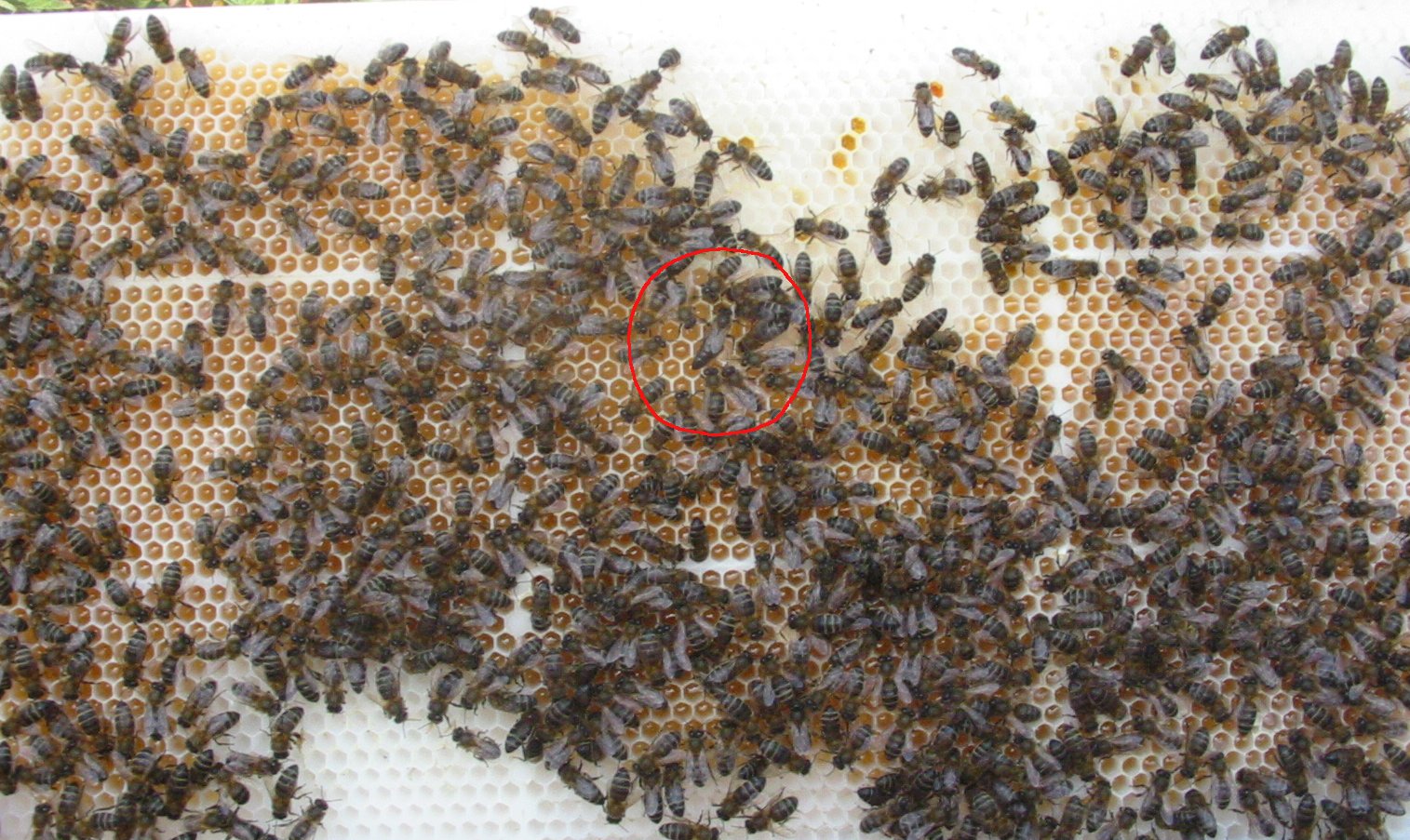 |
29.7.07 A heat wave, 42.7 ° C. Some of the hives melted, they had to be sprayed with water every hour - but these nucs survived without any problems
4.8.07 three colonies have ceased to breed because of the exceptional heat and one is without a queen. I had to remove the excluder and probably one got lost. We had to replace it with a newly bred queen.
17.08.07 they already have reasonably good breeding, but you can see that it is not so easy for them to accept the HSC. Now there are bees that have hatched in small cells and they are visibly smaller. There was very strong wind in the past days and the bees could hardly fly, they therefore had no pollen and stopped the brood a little. Now I feed honey and pollen.
|
|
| 25.9.07 the brood has now stabilized. Colony N ° 1 one comb has brood, N ° 2 has two brood combs. | 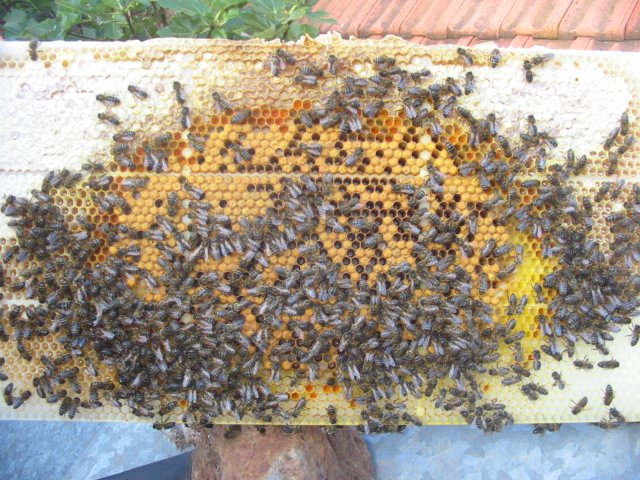 |
| And what a surprise!, colony N ° 3 already shows the baldheaded brood and is kicking out the Varroa mites |
|
| 26.12.07 Our queens of the black bee stop to breed in December and start again at Christmas. That's a big advantage in the combat with the Varroa. The colony No. 1 starts with new brood after also he has thrown out the mites. Today I could see no Varroa in all three colonies. |
|
| 1.2.08 Now they are getting started with the almond blossom and the weather is also favorable. This is the colony No. 3, which threw the mites out in September, as can be seen in the last photo. The brood is now even and I can’t find a mite. 03/10/08 we have now changed the colony N ° 3 on a super.
| 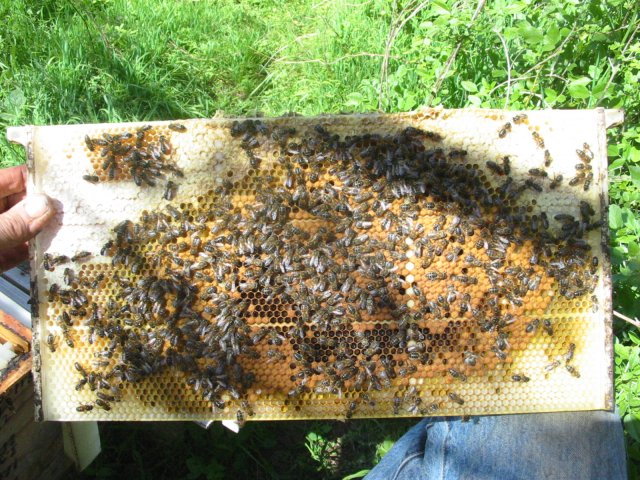 |
In El Paso we have converted some colonies of our colleagues Wolfgang in August last year. They have changed the best one to a super last week and today we had to ad a second box. This is the brood in the HSC. |
|
| and here we see how well they build the small cells |
 |
| and this is brood in the small cells drawn by the bees |
|
| here we have placed the combs directly next to the brood nest, where they are built better. The honey and pollen are outside. (Note - the marked frame hooked wrong due to the Y)
| 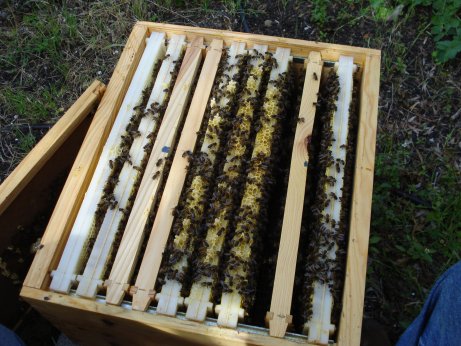 |
| Here we see a colony of another colleague which was also made in August from large cell bees. Now they are small and strong | |
| we have changed it to a super |
|


